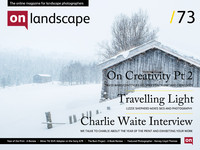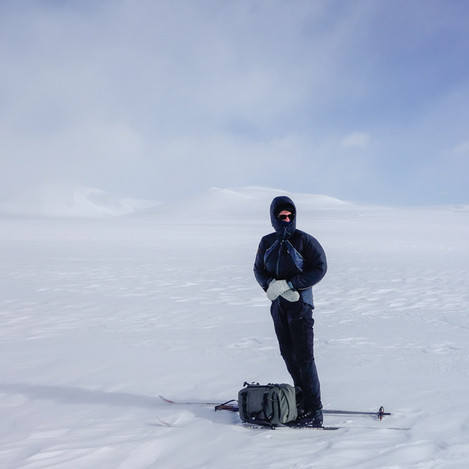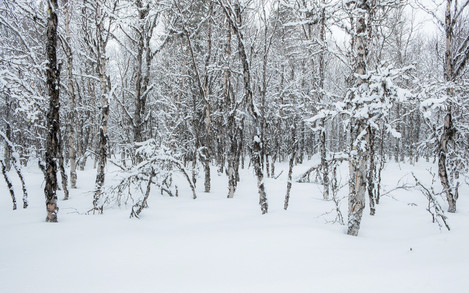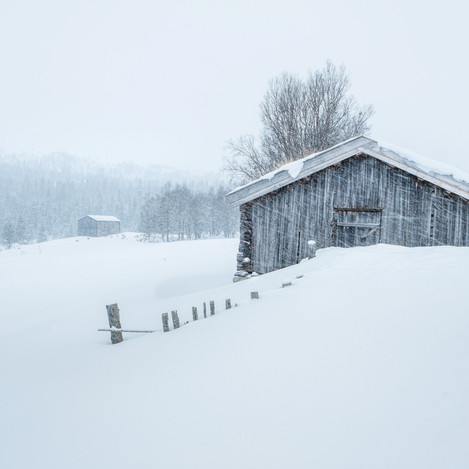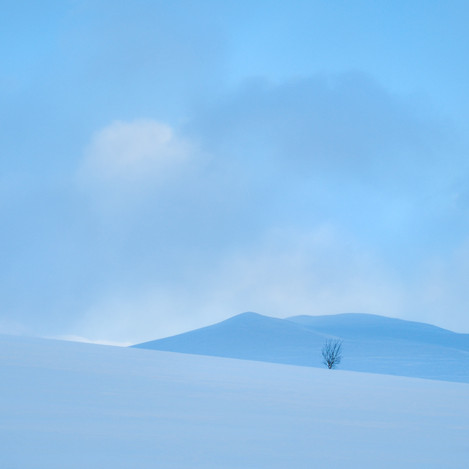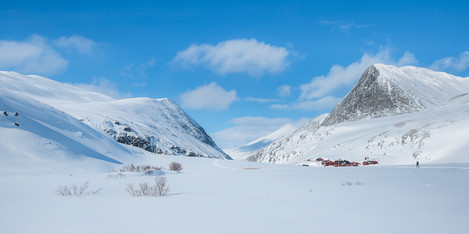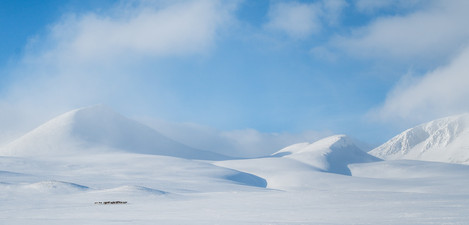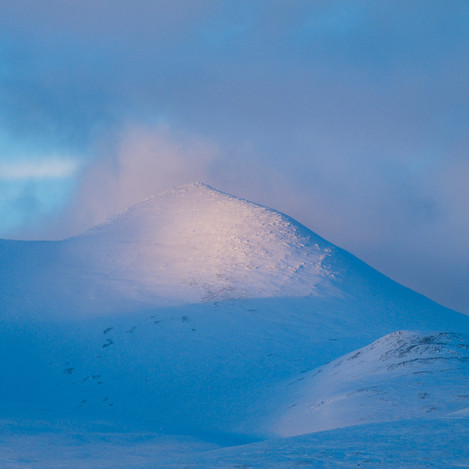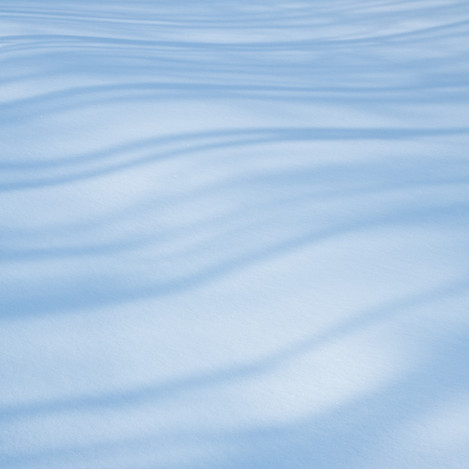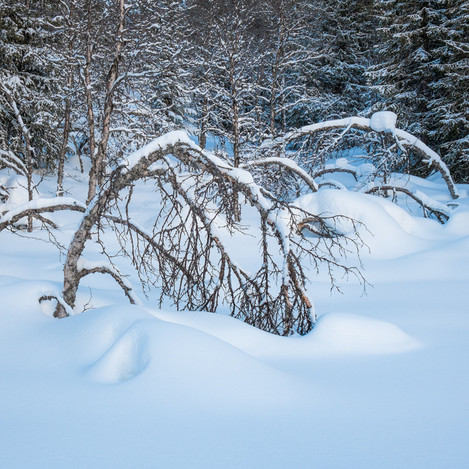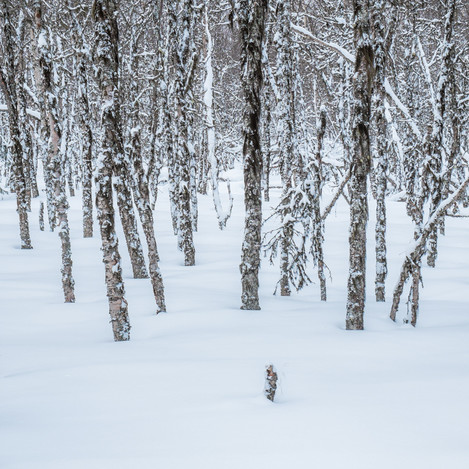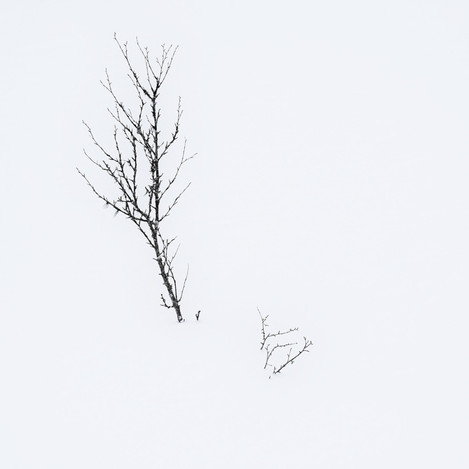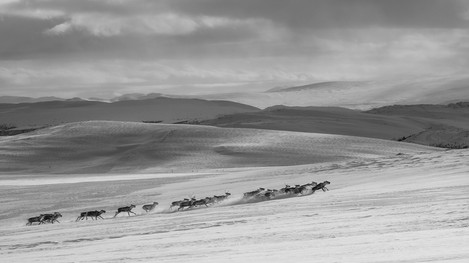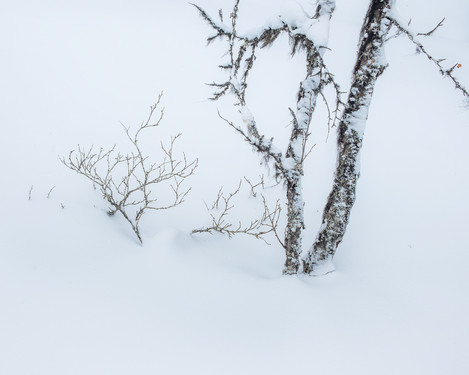Liz talks about how to approach shooting landscapes whilst engaged in a fast paced pursuit

Lizzie Shepherd
Lizzie is a full time professional photographer based in North Yorkshire, specialising in landscape, nature and travel photography. She writes for a number of magazines and runs small group photography workshops. Lizzie’s work is on display at the Joe Cornish Galleries in Northallerton and she has also taken part in a number of different events and exhibitions in the UK. She loves nothing more than being outside, photographing the landscape and looks to find ways of capturing some of our more hidden scenes, hoping to show the beauty and intrigue of the world around us.
Travelling lighter? I’m guessing a number of photographers will identify with that - particularly given the ever increasingly popularity of mirror-less CSCs. I think it would be fair to say that not many of us actually enjoy carrying heavy loads up and down hills, or wherever else our photography takes us.
But working faster?! That doesn’t sound like something any self-respecting landscape photographer should aspire to, does it? Surely it’s all about working more slowly - losing ourselves in the landscape and working very deliberately to produce photography as near to perfection as we can get it. In an ideal world yes but, in my view, there has to be room for both ways of working. I love nothing more than spending a few hours in one spot, working with what’s in front of me, with no time constraints. However, time is not always in plentiful supply and I firmly believed in adapting my approach to what’s in front of me, making the most of what time and circumstances allow.
This may not suit everyone but it’s the only option available to me when my husband and I go cross country skiing. One of the main reasons we both love this kind of skiing (rather than downhill) is that it gives you the ability to access some staggeringly beautiful and unspoilt scenery. And so, last month, we found ourselves visiting Norway’s oldest national park - Rondane - for the second time. I was thrilled to be going back, having fallen in love with its shapely array of mountains on our previous visit, five years earlier. I also hoped it was going to compensate for the lack of a proper winter here in the UK this year.
Last time we had stayed in Hovringen - which gives you quick access to much of the skiing area up on the plateau. This time we opted for the little hamlet of Mysuseter, renting a small hut for the week. From a photographic point of view, this proved to be a superb choice. We were surrounded by a network of magical, snowy forests and, higher up, even better mountain scenery than we’d enjoyed previously.
I’d decided in advance that I’d just ski with my lightweight Fuji cameras, knowing that they were capable of producing great results but expecting to get a little frustrated by some of their shortcomings in terms of usability. So, each day, I went out with an F-Stop Kenti backpack with some spare clothing and provisions, an XE-1 with a 55-200mm lens attached and an XM-1 with an 18-55mm lens attached. This made for a very comfortable carrying weight and meant I had an excellent range of focal lengths available to me without having to change lenses.
I knew already the challenges of combining cross country skiing with photography. In an ideal world, to ski well you want to build up a good, comfortable rhythm, looking straight ahead to assess the terrain. Constantly looking around you and stopping to assess photographic potential is not entirely compatible with this! Of course I ‘make do’ and try my best to keep my balance and not keep my very patient husband, Rob, waiting too, too long! Being able to assess a potential composition reasonably quickly is vital - and all of this with the camera hand held, balancing on a pair of long, skinny skis!
I’ll talk a little about the practicalities of using the Fuji cameras at the end of this article. But first, I wanted to share a little of what we experienced each day and, I hope, give you a taste of why it can be such an incredibly rewarding experience on many levels. Yes, I had to make a few photographic compromises but the alternative doesn’t bear contemplating. I can’t witness scenes like these and turn my back on photographing them - it’s not within my psyche to do so. It’s also not just about the photography - it’s about the complete experience and about enjoying and capturing it to the best of my ability.
By the time we’d got ourselves sorted on our first day, we only had a few hours of daylight left, so opted for what looked a relatively straight forward 15km circuit, taking in the Glitterdalen (Glitter Valley). I think this might just have been my suggestion, having heard about all the wonderful birch trees that line much of this route! Other than an initial climb up onto the lower part of the plateau, most of our journey was through forest and, with light snow falling, conditions were perfect for photography! Rather lovely for skiing too I should add…
The scenery was even lovelier than I could have imagined and the soft, falling snow a dream. I stopped several times to enjoy and capture the lichen covered birch trees, dripping with an irresistible combination of snow and moss. We also passed some wonderfully characterful old barns, which just cried out to be photographed..
The forecast suggested days two and three would be our only days with good visibility and so we decided to head for the mountains on both of these. The forecast also correctly predicted strong winds for day two and the 9km climb up to the Peer Gynt hut, into a strong headwind, was brutal. Again though, conditions were wonderful for photography: swirling spindrift, occasional bursts of fast-moving low cloud, mountain peaks coming and going and the odd tough little tree somehow finding a way to survive in this inhospitable climate. It was bitterly cold at times and, even with my thick dachstein mitts, my fingers were suffering - all a bit challenging for photography. Of course you find a way to make things work and it was an incredibly exhilarating, if exhausting, day.
Day three dawned as the forecasters promised and so off we went again, with another long climb up into the mountains. Thankfully the wind had died down and conditions were really very pleasant for skiing. We had been told the route up to the tourist hut at Rondvassbu was well worth the trek and proved excellent advice. The views were quite breathtaking and just the tonic I needed to help me forget my badly blistered heels and generally weary body. We spent a little while taking in the beauty of this idyllic location, even spotting a little dipper exploring the crystal clear blue water in the partially frozen stream.
However, the best was yet to come and I’m happy to say that, without my constant stopping for photography, we’d have missed one of our most exciting wildlife sightings to date. Whilst I was concentrating on capturing yet another ethereal mountain/cloudscape, Rob noticed a group of small specks on a distant hillside. A look through the binoculars confirmed these were reindeer. We knew that Rondane is home to the odd herd of wild reindeer and so were absolutely thrilled to see these magnificent animals in their natural environment.
We spent a good twenty minutes watching them as they came down the hillside, eventually spotting us and then speeding across our path some 100 metres away, before making a beeline for the spectacular mountain scenery the other side. What a backdrop in which to see and photograph your first herd of wild reindeer! The XE-1 is no action camera but, in the circumstances, I was pretty pleased with some of the results. By the time we reached Mysuseter, sunset was approaching and I caught some beautifully soft, low light on the elegant distant peaks, before we returned to our hut. An amazing day and one we both felt very privileged to enjoy.
Day four and the forecasted snow duly arrived - perfect for another ski through the woods. Thick, fresh snow can be hard work on the legs but there’s a beautifully eerie sense of still and calm when skiing through woodland in falling snow - just magical! As we neared the tiny hamlet of Raphamn, the clouds started to lift and the delicate shadows cast by the slim birch trunks enforced a stop half way up a steep hill. A good opportunity for a rest but a rather precarious position in which to get out the camera!
The second half of our route saw us climbing high amongst some bizarrely shaped hills with the visibility now very good. Just as well, given the fact that many of the small sticks that mark the route were semi-submerged in the deep, fresh snow. We felt very fortunate to be enjoying another exhausting but spectacular day, with yet more incredible views across towards the mountains we’d skied through the previous two days. The late afternoon light was wonderful and I was again able to make the most of some stunning woodland scenes with snow laden, anthropomorphic trees casting soft shadows on the virgin snow underneath.
So much snow had fallen that day, that the trees still had a good covering on our last full day of skiing so once again, we again explored some of the forest paths. At one point I could have sworn I was skiing through Nania - childhood memories conjured up by the weird and wonderful patterns of the moss draped trees. Lunch was rather a treat and we shared our sandwiches with a number of very friendly and extremely cheeky willow tits. The afternoon was a bit of a challenge with temperatures increasing to just above freezing. If you use wax based skis, as we do, trying to achieve a good combination of grip and glide at this temperature is a nightmare and one we have yet to master!
There was only time for a quick morning ski on our last day. It was perhaps just as well that conditions were not nearly as good for photography, with largely cloudless skies. In fact my camera came out just once! And so the week ended - no serious injuries and both of us incredibly happy with the way things had turned out. Also, despite the inevitable compromises, I was really pleased with some of the images I’d captured.
So how did the Fuji gear fare? I’d say about how I expected. I love the results these little cameras can produce - the sensor seems to produce photographs with a lovely feel to them and the optics of the lenses are really very good. The dynamic range of the sensor is also very good - not quite up there with my Nikon but more than good enough for most situations. Overall they are very enjoyable to use.
The only downsides were really the ones I had anticipated. The XE-1’s electronic viewfinder is very good in unchallenging light but, as a glasses wearer, I’d like it to be a little larger. I also find it has enough lag to be annoying on those occasions where you need to react quickly. I believe the XT-1 would almost certainly eradicate both of these frustrations - but it’s not an upgrade I can afford or justify at this time.
I’d be interested to find out to what extent the bigger and brighter EVFs of the latest cameras would help in terms of trying to compose whilst wearing prescription sunglasses. I found I had to take them off when composing through the viewfinder - not an ideal solution because whilst I can then see what’s in the viewfinder I can’t see the wider view with my bare eyes. I’m not sure what the answer is - perhaps a dual mode option where you can press a button to brighten the EVF temporarily?
The XM-1 has no viewfinder - only an LCD. Being a newer camera, it suffers less from lag than the XE-1 and is generally more responsive. In overcast light, I found composing with the LCD screen worked well, even with sunglasses. In brighter light I had to take off my prescription sunglasses and peer at the screen. I wouldn’t be happy using this camera handheld with a longer lens, finding it too hard to compose accurately and to keep it stable. With the 18-55 it worked very well though, my only real gripe being the lack of an inbuilt spirit level.
Some of the XM-1 controls are less accessible than on the XE-1 but it does have one major advantage in that the exposure compensation dial seems content to say where you leave it. Every time I took the XE-1 out of my bag, the dial had gone to +2 EV. I also found the tilting screen of the XM-1 came in useful at times - on one occasion allowing me to hold the camera above eye level to get a clean composition of a moss-draped birch.
So, despite what you may read on twitter, these little Fuji cameras are not perfect! However, they are very accomplished performers in most respects and, a few gripes aside, are a pleasure to use. Most of the controls you will want to access regularly are accessed with buttons and dials, rather than having to delve through a menu. I particularly like being able to set both EVF and LCD to show a square crop - it’s my default option, and quick and easy to change if you assign the function button to file size/crop. I’m certainly not ready to ditch my DSLR but there’s very few situations in which I would not be comfortable using these camera and, equally important, I know they can produce some cracking prints!

